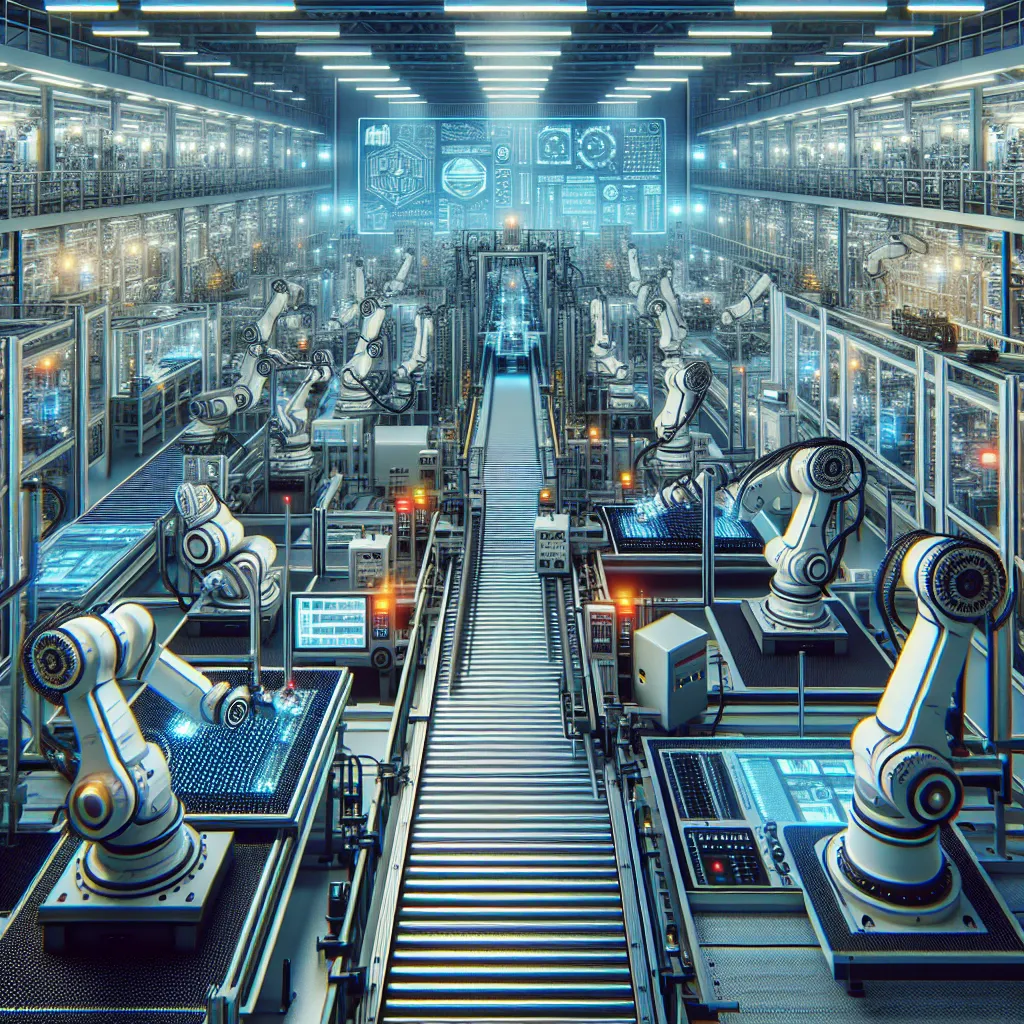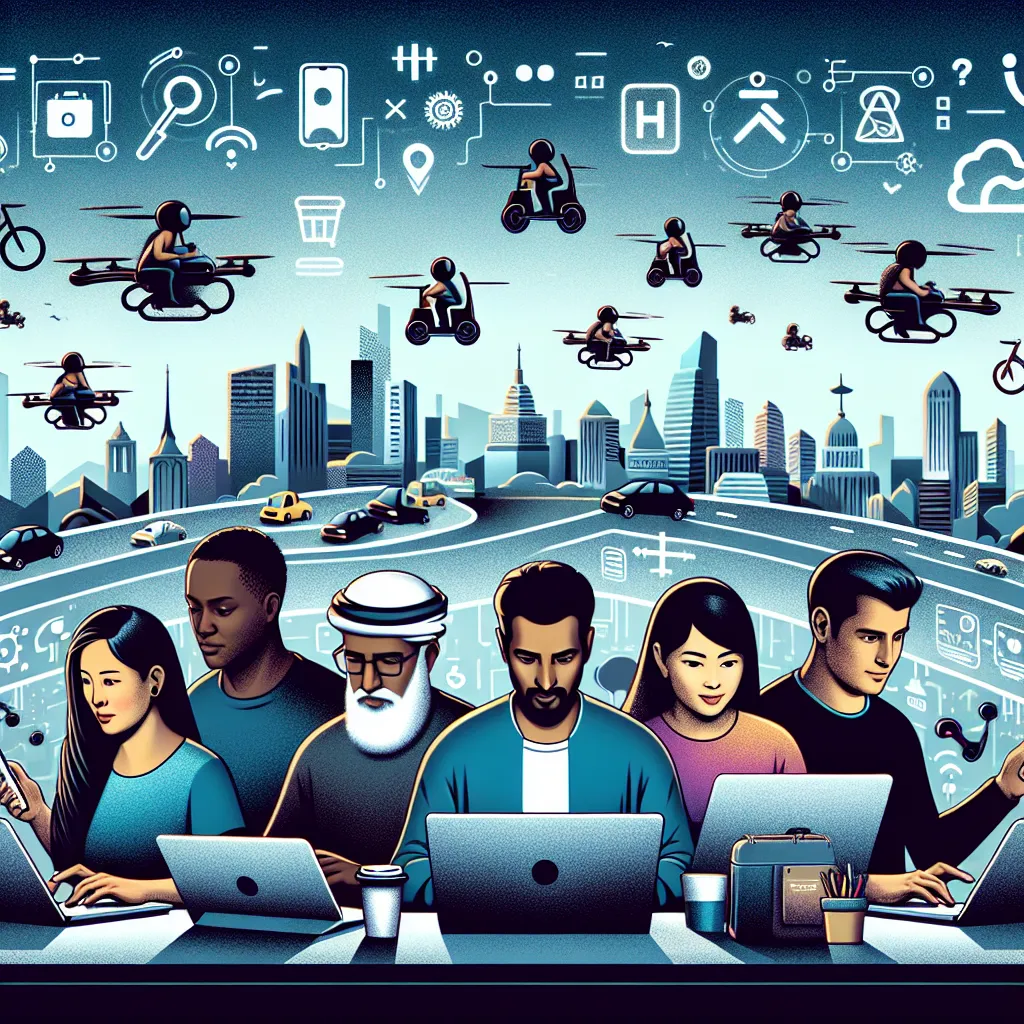Welcome to our IELTS Reading practice session focused on the fascinating topic of “How Robotics is Reshaping Manufacturing.” As an experienced IELTS instructor, I’m excited to share with you a comprehensive practice test that will not only enhance your reading skills but also provide valuable insights into this cutting-edge subject. Let’s dive into the world of industrial robotics and its transformative impact on the manufacturing sector!
Nội dung bài viết
 Robotic arms in modern factory
Robotic arms in modern factory
IELTS Reading Test: The Rise of Robotics in Manufacturing
Passage 1 – Easy Text
The Integration of Robotics in Manufacturing
The manufacturing industry has undergone a significant transformation in recent decades, largely due to the integration of robotics. Automated systems and robotic technologies have become increasingly prevalent on factory floors worldwide, revolutionizing production processes and reshaping the way goods are manufactured. This shift towards automation has been driven by several factors, including the need for increased efficiency, improved product quality, and reduced labor costs.
One of the primary advantages of robotics in manufacturing is the ability to perform repetitive tasks with unparalleled precision and consistency. Unlike human workers, robots do not experience fatigue or lapses in concentration, allowing them to maintain a high level of accuracy throughout extended production runs. This consistency not only enhances product quality but also minimizes waste and reduces the likelihood of errors that could result in costly recalls or production delays.
Moreover, the implementation of robotics has led to significant improvements in workplace safety. Many manufacturing processes involve hazardous materials or dangerous machinery, posing risks to human workers. By delegating these tasks to robots, companies can mitigate safety concerns and create a safer working environment for their employees. This shift allows human workers to focus on more complex, cognitive tasks that require creativity and problem-solving skills.
The adoption of robotics in manufacturing has also resulted in increased productivity and efficiency. Robots can operate 24/7 without the need for breaks or shift changes, leading to higher output levels and faster production times. Additionally, advanced sensor technologies and artificial intelligence algorithms enable robots to adapt quickly to changes in production requirements, facilitating greater flexibility in manufacturing processes.
While the integration of robotics has led to concerns about job displacement, it has also created new opportunities in the workforce. The demand for skilled technicians, engineers, and programmers to design, maintain, and operate robotic systems has grown significantly. This shift has led to the emergence of new job roles and the need for upskilling and reskilling programs to prepare workers for the evolving manufacturing landscape.
As robotics technology continues to advance, its impact on manufacturing is expected to grow even further. Collaborative robots, or cobots, are becoming increasingly common, working alongside human employees to enhance productivity and ergonomics. The Internet of Things (IoT) and cloud computing are also being integrated with robotic systems, enabling real-time data analysis and predictive maintenance, further optimizing manufacturing processes.
In conclusion, the rise of robotics in manufacturing represents a paradigm shift in the industry. While challenges remain, the benefits of increased efficiency, improved safety, and enhanced product quality are driving the continued adoption of robotic technologies across various manufacturing sectors.
Questions 1-7
Do the following statements agree with the information given in the passage?
Write
TRUE if the statement agrees with the information
FALSE if the statement contradicts the information
NOT GIVEN if there is no information on this
- Robotics in manufacturing has led to decreased efficiency in production processes.
- Robots can maintain a high level of accuracy during long production runs without getting tired.
- The use of robots in manufacturing has eliminated all safety concerns in factories.
- Robotics adoption has resulted in 24/7 operation capabilities in manufacturing.
- The integration of robotics has only led to job losses in the manufacturing sector.
- Collaborative robots are designed to replace human workers entirely.
- The Internet of Things and cloud computing are being integrated with robotic systems in manufacturing.
Questions 8-13
Complete the sentences below.
Choose NO MORE THAN TWO WORDS from the passage for each answer.
- Robotic technologies have become increasingly ___ on factory floors worldwide.
- Robots can perform repetitive tasks with unparalleled ___ and consistency.
- The implementation of robotics has led to significant improvements in ___.
- Advanced ___ and artificial intelligence algorithms enable robots to adapt quickly to changes in production requirements.
- The demand for skilled technicians, engineers, and programmers to design, maintain, and operate ___ has grown significantly.
- ___ are becoming increasingly common, working alongside human employees to enhance productivity and ergonomics.
Passage 2 – Medium Text
The Economic Implications of Robotics in Manufacturing
The rapid adoption of robotics in manufacturing has sparked intense debate among economists, policymakers, and industry leaders regarding its long-term implications for the global economy. While proponents argue that automation will drive economic growth and create new opportunities, critics warn of potential job displacement and widening income inequality. This complex issue requires a nuanced examination of the multifaceted effects of robotics on various aspects of the manufacturing sector and the broader economy.
One of the most significant economic benefits of robotics in manufacturing is the potential for increased productivity and efficiency. By automating repetitive and labor-intensive tasks, companies can significantly reduce production times and costs. This enhanced efficiency often translates into lower prices for consumers, potentially stimulating demand and driving economic growth. Furthermore, the ability to produce goods more quickly and at a lower cost can improve a country’s competitiveness in global markets, potentially leading to increased exports and economic prosperity.
However, the impact of robotics on employment in the manufacturing sector is a subject of considerable concern. While automation has undoubtedly led to job losses in certain areas, particularly for low-skilled workers, it has also created new employment opportunities in fields such as robotics engineering, software development, and systems integration. The net effect on employment remains a topic of debate, with some experts predicting a significant disruption to the labor market, while others argue that historical patterns of technological advancement suggest that new jobs will emerge to replace those lost to automation.
The adoption of robotics in manufacturing also has implications for income distribution and economic inequality. As automation displaces lower-skilled workers, there is a risk of widening the gap between high-skilled, high-wage workers and those with fewer skills and lower earning potential. This trend could exacerbate existing economic disparities and pose challenges for social mobility. Addressing these concerns may require proactive policies focused on education, retraining, and social support systems to ensure that the benefits of technological advancement are more evenly distributed.
From a macroeconomic perspective, the increased use of robotics in manufacturing could have significant implications for global supply chains and trade patterns. As labor costs become less of a factor in production decisions, there may be a trend towards reshoring or nearshoring of manufacturing activities, potentially altering the dynamics of international trade and economic development. This shift could have profound implications for emerging economies that have historically relied on low-cost labor as a competitive advantage in attracting manufacturing investment.
The environmental impact of robotics in manufacturing is another important economic consideration. While automation can lead to more efficient use of resources and reduced waste, the production and operation of robotic systems require significant energy inputs. Balancing the potential environmental benefits of robotics with their energy requirements will be crucial in assessing their overall economic and ecological impact.
Investment in robotics and related technologies also has implications for capital allocation and corporate finance. As companies invest heavily in automated systems, there may be shifts in how capital is deployed across different sectors of the economy. This could potentially lead to changes in investment patterns, affecting everything from stock market valuations to venture capital funding priorities.
In conclusion, the economic implications of robotics in manufacturing are far-reaching and complex. While the potential for increased productivity and efficiency is clear, addressing the challenges of labor market disruption and economic inequality will be crucial in ensuring that the benefits of automation are broadly shared. As robotics technology continues to evolve, ongoing research and thoughtful policy-making will be essential in navigating the economic transformations ahead.
Questions 14-20
Choose the correct letter, A, B, C, or D.
-
According to the passage, the debate surrounding robotics in manufacturing focuses on:
A) The technical challenges of implementing robotic systems
B) The environmental impact of automation
C) The long-term economic implications of automation
D) The ethical considerations of replacing human workers -
The adoption of robotics in manufacturing is said to potentially:
A) Increase production costs
B) Reduce competitiveness in global markets
C) Lower prices for consumers
D) Slow down production times -
The impact of robotics on employment in manufacturing is described as:
A) Universally positive
B) Entirely negative
C) A subject of debate among experts
D) Limited to creating new jobs -
The passage suggests that the adoption of robotics in manufacturing could:
A) Reduce income inequality
B) Increase the gap between high-skilled and low-skilled workers
C) Have no effect on income distribution
D) Only affect wages in the technology sector -
According to the text, the increased use of robotics in manufacturing may lead to:
A) Greater reliance on overseas production
B) A trend towards reshoring or nearshoring
C) The elimination of international trade
D) Increased labor costs in production -
The environmental impact of robotics in manufacturing is described as:
A) Entirely positive
B) Completely negative
C) A balance between benefits and energy requirements
D) Not significant enough to consider -
The passage suggests that investment in robotics may affect:
A) Only the manufacturing sector
B) Exclusively small businesses
C) Capital allocation across different economic sectors
D) Government spending patterns
Questions 21-26
Complete the summary below.
Choose NO MORE THAN TWO WORDS from the passage for each answer.
The adoption of robotics in manufacturing has significant economic implications. While it can increase productivity and improve a country’s (21) in global markets, there are concerns about job displacement, particularly for (22) workers. The impact on income distribution may lead to widening (23) between different skill levels. From a macroeconomic perspective, robotics could affect (24) and trade patterns, potentially leading to changes in manufacturing locations. The (25) of robotics is also an important consideration, balancing efficiency gains with energy requirements. Investment in robotics may influence (26) across various sectors of the economy.
Passage 3 – Hard Text
The Technological Frontiers of Robotics in Manufacturing
The relentless pace of technological innovation continues to push the boundaries of what is possible in manufacturing robotics. As we stand on the cusp of what many are calling the Fourth Industrial Revolution, or Industry 4.0, the integration of advanced robotics with emerging technologies such as artificial intelligence (AI), machine learning, and the Internet of Things (IoT) is ushering in a new era of smart manufacturing. This convergence of technologies is not only enhancing the capabilities of robotic systems but also fundamentally transforming the nature of production processes and the relationship between humans and machines in the manufacturing environment.
One of the most significant advancements in manufacturing robotics is the development of autonomous mobile robots (AMRs). Unlike traditional industrial robots that are fixed in place and programmed to perform specific tasks, AMRs can navigate complex factory environments independently, adapting to changing conditions and collaborating with human workers. These robots utilize sophisticated sensor fusion technologies, combining data from cameras, lidar, and other sensors to create a real-time map of their surroundings. Machine learning algorithms enable AMRs to optimize their paths and workflows, continuously improving their efficiency and responsiveness to the dynamic manufacturing environment.
The integration of AI and machine learning into robotic systems is also revolutionizing predictive maintenance in manufacturing. By analyzing vast amounts of data collected from sensors embedded throughout the production line, AI algorithms can predict when equipment is likely to fail or require maintenance. This proactive approach to maintenance not only reduces downtime and repair costs but also extends the lifespan of manufacturing equipment. Furthermore, machine learning models can optimize production schedules and resource allocation, dynamically adjusting to changing demand patterns and supply chain disruptions.
Another frontier in manufacturing robotics is the development of soft robotics and biomimetic designs. These innovative approaches draw inspiration from biological systems to create robots with flexible, adaptable structures that can handle delicate or irregularly shaped objects with unprecedented dexterity. Soft robotic grippers, for example, can conform to the shape of objects, allowing for gentler and more versatile manipulation of products on the assembly line. This technology opens up new possibilities for automation in industries that have traditionally resisted robotization due to the complexity and variability of their products.
The concept of human-robot collaboration is also evolving rapidly, with the development of cobots (collaborative robots) designed to work safely alongside human workers. These robots are equipped with advanced force-sensing technologies and sophisticated control systems that allow them to detect and respond to human presence, ensuring safe interaction. Cobots are particularly valuable in tasks that require a combination of human cognitive skills and robotic precision and endurance. This symbiotic relationship between humans and robots is redefining work processes and job roles in manufacturing, creating a more flexible and adaptive production environment.
The integration of robotics with edge computing and 5G networks is another area of significant development. Edge computing allows for real-time processing of data at or near the source of data generation, reducing latency and enabling faster decision-making. When combined with the high-speed, low-latency capabilities of 5G networks, this technology enables more responsive and agile robotic systems. For example, swarms of coordinated robots can communicate and collaborate in real-time, adapting to changing production requirements with unprecedented speed and flexibility.
Digital twin technology is also emerging as a powerful tool in the design and optimization of robotic manufacturing systems. By creating a virtual replica of the physical production environment, engineers can simulate and test different robotic configurations and workflows before implementing them in the real world. This approach not only reduces the time and cost associated with deploying new robotic systems but also allows for continuous optimization of existing processes.
As these technologies continue to evolve, they are also converging with advancements in additive manufacturing (3D printing) and generative design. This integration is enabling the creation of highly optimized, custom-designed robotic components that can be produced on-demand, further enhancing the flexibility and adaptability of manufacturing systems.
The ethical and societal implications of these technological advancements cannot be overlooked. As robotic systems become more autonomous and capable of learning and decision-making, questions arise regarding accountability, privacy, and the long-term impact on employment and skills requirements. Addressing these challenges will require ongoing dialogue between technologists, policymakers, and society at large to ensure that the benefits of advanced manufacturing robotics are realized while mitigating potential negative consequences.
In conclusion, the technological frontiers of robotics in manufacturing are expanding at an unprecedented rate, driven by the convergence of AI, IoT, and other emerging technologies. As these innovations continue to mature and integrate, they promise to unlock new levels of productivity, flexibility, and sustainability in manufacturing. However, realizing the full potential of these advancements will require not only technical expertise but also careful consideration of their broader implications for workforce development, economic structures, and societal values.
Questions 27-32
Choose the correct letter, A, B, C, or D.
-
What is described as a key feature of autonomous mobile robots (AMRs)?
A) They are fixed in place on the factory floor
B) They can navigate complex environments independently
C) They are programmed to perform only one specific task
D) They do not interact with human workers -
How does the integration of AI and machine learning benefit manufacturing maintenance?
A) By eliminating the need for any maintenance
B) By predicting when equipment is likely to fail
C) By replacing all human maintenance workers
D) By making equipment completely fail-proof -
What is a characteristic of soft robotics and biomimetic designs?
A) They are made of hard, inflexible materials
B) They can only handle large, heavy objects
C) They can adapt to handle delicate or irregularly shaped objects
D) They are designed to replace human workers entirely -
What is the main advantage of cobots (collaborative robots)?
A) They work completely independently of humans
B) They are designed to work safely alongside human workers
C) They are cheaper to produce than traditional robots
D) They can perform all tasks without human intervention -
How does the combination of edge computing and 5G networks benefit robotic systems?
A) It eliminates the need for human oversight
B) It allows for more responsive and agile robotic systems
C) It reduces the overall cost of robotic systems
D) It makes robotic systems completely autonomous -
What is the primary benefit of digital twin technology in robotic manufacturing?
A) It replaces physical robots with virtual ones
B) It eliminates the need for real-world testing
C) It allows for simulation and testing before real-world implementation
D) It makes physical production environments obsolete
Questions 33-40
Complete the sentences below.
Choose NO MORE THAN THREE WORDS from the passage for each answer.
-
The integration of advanced robotics with AI, machine learning, and IoT is often referred to as ___.
-
AMRs use ___ technologies to create a real-time map of their surroundings.
-
Machine learning models can optimize production schedules and ___, adapting to changing demand patterns.
-
___ draw inspiration from biological systems to create robots with flexible, adaptable structures.
-
Cobots are equipped with advanced ___ technologies that allow them to detect and respond to human presence.
-
The combination of edge computing and 5G networks enables


